AMEB offers a number of theory subjects for students to study.
Students should consult their teacher or the AMEB Manual of Syllabus for further details if they are unsure which subject is the right one for them.
All theory exams are taken as an online exam, except Music Craft grades 5 and 6, and Diploma level written exams.
Practical music exams for the higher grades of both the Comprehensive and Repertoire format require a theory subject to be undertaken to complete the exam and release the exam certificate. Similarly, diploma theory exams require a certain level of practical exam to be completed.
Theory of Music grade exams
This syllabus offers a traditional approach to music theory and students sit for one written online exam. There is no aural component. Content includes:
- keys and scales
- intervals
- chords
- time and rhythm
- transposition
- terms and signs
- rhythmic invention
As the grades progress, creative aspects are introduced, such as harmonisation, melody writing and general knowledge questions.
Musicianship grade exams
The Musicianship syllabus has similar content to the Theory of Music syllabus up to Grade 3. From Grade 4, Musicianship introduces an aural component, played through your online device. Both online exams are completed consecutively in one sitting.
The short aural section of the exam expects students to recognise:
- scale forms
- intervals
- triad positions
- motion
- cadences
Music Craft grade exams
Music Craft covers the theoretical and aural aspects of music in different ways from Theory of Music and Musicianship. Exams have a written and an aural component at every grade level. This syllabus most closely aligns with current music teaching at the HSC and tertiary levels.
Teacher guides are available from AMEB Connect that cover all areas of this syllabus in detail and include examples. Student workbooks for each grade are also available as a study aid, divided into 40 short lessons per grade. These workbooks include CDs that cover all the aural material.
Music craft exams from preliminary to grade 4 are taken as an online exam, with the written and aural components completed consecutively in one sitting. Grades 5 and 6 are taken on the same day in August each year during session 05 at the Clarence Street exam facility.
Speech & Performance Theory grade exams
Speech and Performance Theory students learn how to master communicating in the English language. Speech and Performance Theory studies are a requirement for students of all Speech and Drama syllabuses.
In these online exams, students focus on the theory and analyse the functional framework of English communication. Linguistic tools, vocal modulation, the use of phonetic tools and the study of theatre and communication theory are also covered.








